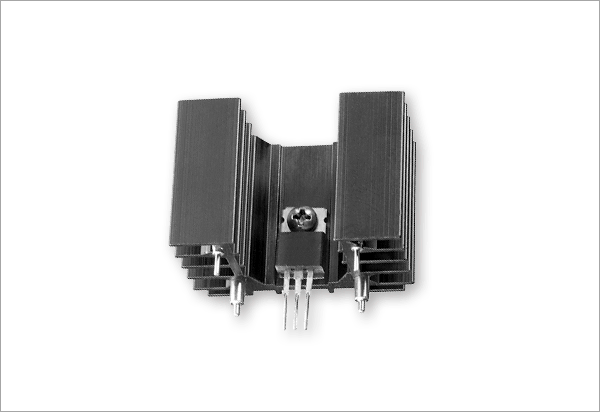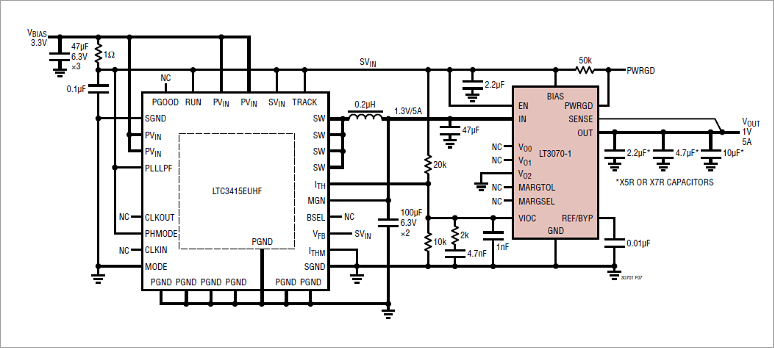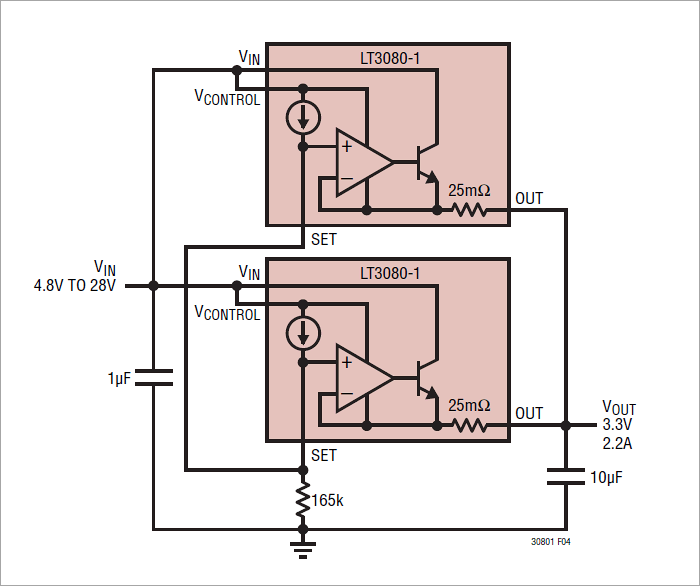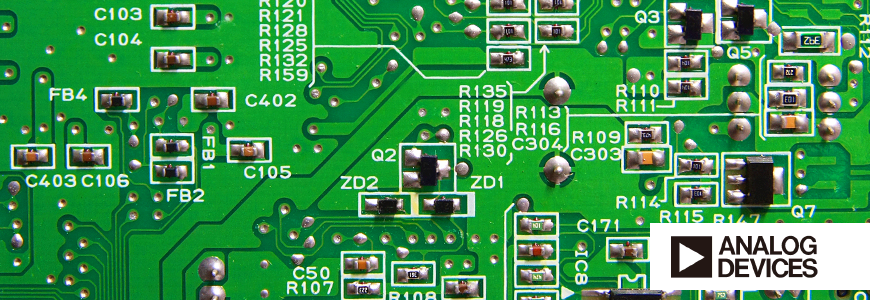For noise sensitive applications, switching regulators cannot be used and linear regulators are used. At that time, if the potential difference is large or the current value of the load is large, heat generated by the linear regulator becomes a problem.
traditional method
Dissipate heat to a heatsink or housing
When designing with a large enclosure, use a linear regulator in the TO-220 package to release heat to the enclosure, or attach a large heat sink with screws as shown in Figure 1 for efficiency. I was dissipating heat.
Recently, it has become necessary to reduce the size of the housing and board, and when a heat sink cannot be used, it is often designed to reduce power consumption in the application and heat is dissipated to the board using a QFN package or the like. I'm here.

How to reduce fever
Switching regulator and low drop LDO configuration
A switching regulator may be used on the board, such as for the core voltage of the FPGA, but there are cases where the power supply for the PLL needs to be low noise.
In such cases, it is possible to suppress heat generation by first dropping the voltage to a low voltage such as 5V or 3.3V with a switching regulator and using a low-drop type LDO as the power supply for the PLL.
The Analog Devices LT3070-1 works well as a linear regulator with a dropout voltage (input-to-output voltage difference) of 85mV. As shown in Figure 2, it is possible to configure a power supply circuit that creates 1.3V with the LTC3415 in the previous stage and creates an output of 1.0V/5A with the LT3070-1.
When 1.0V is generated directly from 3.3V, the power loss (Pd) is 11.5W [(3.3V-1.0V)x5A].
When 1.0V is generated from 1.3V through the LTC3415, the power loss (Pd) is 1.5W, and by reducing the power loss by 10W, it is possible to suppress the heat generation of the LT3070-1.

CONFIGURATION BY PARALLEL CONNECTION OF LINEAR REGULATORS
In systems where switching regulators cannot be used on the same board, a circuit configuration like the LT3070-1 cannot be used.
In such cases, it is necessary to consider a parallel configuration of linear regulators.
The problem with paralleling is balancing the output currents of the paralleled linear regulators. One way to balance the output current is to use a "ballast resistor" at the output of the linear regulator. In general, to improve the balance, it is necessary to increase the ballast resistance, but this has the side effect of worsening the load regulation. This trade-off relationship increases the difficulty of designing parallel connections.
LT3080-1 with integrated ballast resistor
The Analog Devices LT3080-1 is a parallelable linear regulator.
As shown in Figure 3, a 25mΩ ballast resistor is included to allow for even current sharing in the design.
Figure 3 shows 2A output with two parallel connections, but it is possible to further increase the output current by increasing the number of parallel connections. Also, for a circuit that requires a load current of 2A, if you increase the number of LT3080-1s from 2 to 4 in parallel, the load current per unit will be reduced to 500mA, so heat generation will be reduced and heat dissipation design. becomes easier.
This is the ideal linear regulator for those who can only use linear regulators and are struggling with heat dissipation design.

Click here for recommended seminars/workshops
[For FPGA designers] Power trouble example seminar
LTspice & Power Supply Design Seminar Introduction <Free>
[For FPGA designers] Thermal design seminar <free>
Click here for recommended articles/materials
Click here to purchase products
Click here for manufacturer site/other related links
LDO Linear Voltage Regulator Product Information
LT3070-1 product information
LT3080-1 product information

